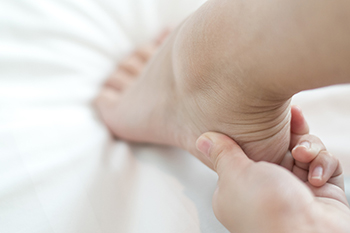Sever’s Disease and Children
Tuesday, 08 October 2024 00:00
Sever's disease, or calcaneal apophysitis, affects children and adolescents, particularly those who are active in sports. It involves swelling and irritation of the growth plate in the heel, specifically the area where bone growth occurs, and is more susceptible to injury. Symptoms of Sever's disease typically include pain and tenderness in one or both heels. You might also notice swelling and redness in the heel, stiffness when first waking up, and limping or walking on tiptoes to avoid discomfort. Pain can intensify during or after physical activity and tends to improve with rest. The good news is that with proper management by a podiatrist, Sever's disease usually resolves within a few months and does not cause lasting issues. If your child is experiencing these symptoms, it is suggested you schedule an appointment with a podiatrist. They can provide guidance on treatment options to ease the pain and ensure a smooth recovery.
Sever's disease often occurs in children and teens. If your child is experiencing foot or ankle pain, see Dr. Robert Marcus from Foot & Ankle Center of Teaneck. Our doctor can treat your child’s foot and ankle needs.
Sever’s Disease
Sever’s disease is also known as calcaneal apophysitis, which is a medical condition that causes heel pain I none or both feet. The disease is known to affect children between the ages of 8 and 14.
Sever’s disease occurs when part of the child’s heel known as the growth plate (calcaneal epiphysis) is attached to the Achilles tendon. This area can suffer injury when the muscles and tendons of the growing foot do not keep pace with bone growth. Therefore, the constant pain which one experiences at the back of the heel will make the child unable to put any weight on the heel. The child is then forced to walk on their toes.
Symptoms
Acute pain – Pain associated with Sever’s disease is usually felt in the heel when the child engages in physical activity such as walking, jumping and or running.
Highly active – Children who are very active are among the most susceptible in experiencing Sever’s disease, because of the stress and tension placed on their feet.
If you have any questions, please feel free to contact our office located in Teaneck, NJ . We offer the newest diagnostic and treatment technologies for all your foot and ankle injuries.





